1. It’s Small Enough to Fit on Your Finger—But You Should Never Try It
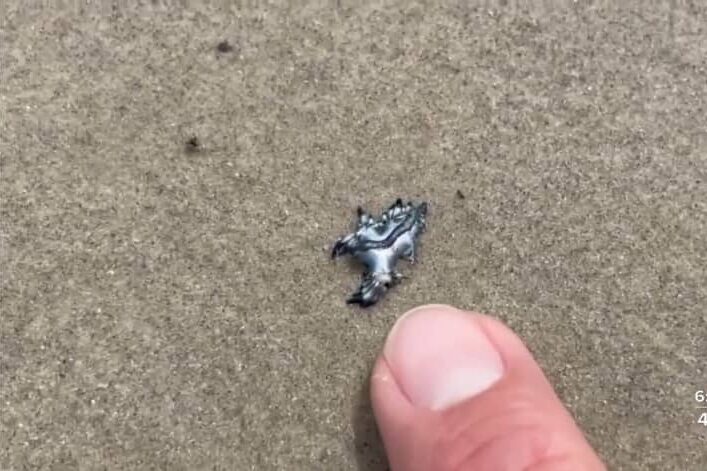
At just about 1.2 inches long, the blue dragon is smaller than a paperclip. You’d think something that tiny would be harmless, right? Wrong. This little warrior steals venom from its prey—mostly venomous Portuguese man o’ war jellyfish—and supercharges it inside its body. So if you ever come across one on the shore, resist the urge to pick it up. The sting can cause searing pain, nausea, and even allergic reactions. Not exactly the kind of magical experience you’d hope for. Even after death, their venom remains active, meaning a washed-up blue dragon can still pack a painful sting. Some people, mistaking them for harmless seashells, have learned this lesson the hard way.
Stepping on one can feel like being stung by multiple jellyfish at once, a burning, unforgettable experience no beachgoer wants. Unlike jellyfish, though, the blue dragon has no visible tentacles, making its danger even more deceptive. Its bright blue color might look mesmerizing, but in nature, vivid colors are often a warning sign—a lesson the blue dragon embodies perfectly. Scientists believe its venom-concentrating ability is an evolutionary advantage, making it a feared predator despite its size. So, next time you’re strolling along the shore, keep an eye out—you never know when a tiny blue dragon might be waiting in the sand.
2. It Floats Upside Down, Using the Ocean as Camouflage
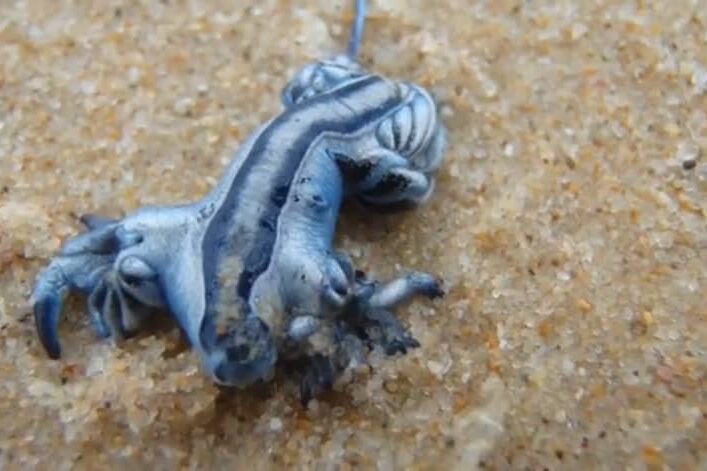
The blue dragon has a sneaky way of avoiding predators—it drifts belly-up on the ocean’s surface, perfectly camouflaged against the water. The top of its body is silvery-gray, blending with the sunlight reflecting off the waves, while its electric-blue underside helps it disappear into the deep when seen from below. This reverse color trick is called countershading, and it’s one of nature’s most brilliant disappearing acts. It’s basically wearing an invisibility cloak made of color. But despite its clever disguise, hungry sea birds and fish sometimes spot them, turning the tiny dragon into a floating snack. Scientists consider its camouflage one of the most effective survival tactics in the open ocean.
To stay afloat, the blue dragon traps air inside its stomach, acting like a built-in life raft. This buoyancy allows it to drift effortlessly, but it also means it’s completely at the mercy of ocean currents. Unlike fish, it can’t swim against waves or choose where it goes—it simply goes where the water takes it. Sometimes, this leads it into dangerous territories where predators lurk, but other times, it ends up washing ashore, shocking unsuspecting beachgoers. Despite its lack of control, the blue dragon thrives, proving that sometimes, the best survival strategy is simply going with the flow.
3. It Stores Stolen Venom Like a Tiny, Floating Bank Vault
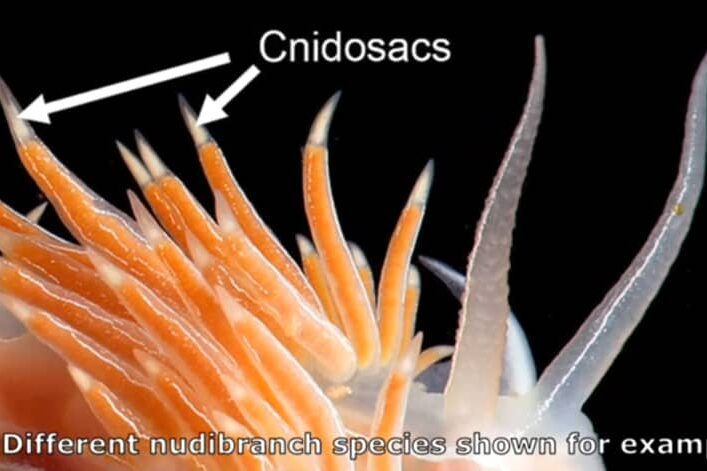
The blue dragon doesn’t just steal venom—it upgrades it. After dining on venomous jellyfish, it collects the stinging cells (called nematocysts) in tiny pockets in its body. But here’s the wild part: it concentrates the venom, making it even more powerful than what the jellyfish originally had. So, in a way, this little guy is like a villain in a sci-fi movie—absorbing the power of its enemies and using it against them. The more jellyfish it consumes, the more potent it becomes, making it a dangerous little thief of the sea. Scientists are fascinated by its unique ability to store venom without harming itself, a process still not fully understood.
This venom-hoarding talent makes the blue dragon one of the ocean’s most formidable tiny predators. Unlike jellyfish, which use venom to capture prey, the blue dragon uses its stolen sting entirely for defense. Any fish, bird, or human that dares to touch it will feel the full force of its stolen arsenal. It’s nature’s way of showing that even the smallest creatures can pack the deadliest punch. This strategy also helps it survive against much larger threats, proving that sometimes, the best way to win is by using an enemy’s power against them.
4. It’s a Ruthless Cannibal When Food Gets Scarce
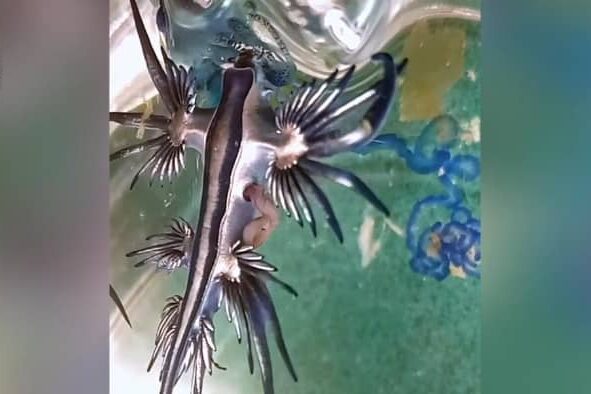
If you thought its diet was limited to jellyfish, think again. The blue dragon has zero hesitation about eating its own kind. When food is scarce, it turns on other blue dragons, proving that even in the tiny world of sea slugs, survival of the fittest still applies. Imagine looking at your friend and thinking, Eh, dinner is dinner. That’s the level of savagery we’re dealing with. This cannibalistic habit ensures that at least some blue dragons survive even in tough times. In the ocean, being adorable won’t save you—but being ruthless just might. Scientists have observed that even juveniles don’t hesitate to feast on their siblings if given the chance.
This brutal survival tactic might seem shocking, but in the wild, it’s all about ensuring the strongest live on. The blue dragon’s venomous defense makes it difficult for many predators to eat, but when faced with starvation, they become their own worst enemies. Researchers believe this cannibalism plays a role in population control, ensuring that only the most resilient blue dragons pass on their genes. It’s a harsh but effective strategy, proving once again that in nature, survival often comes at a cost. So, while they might look delicate and graceful, these creatures are anything but gentle.
5. It Rides the Ocean Currents Like a Drifter with No Destination
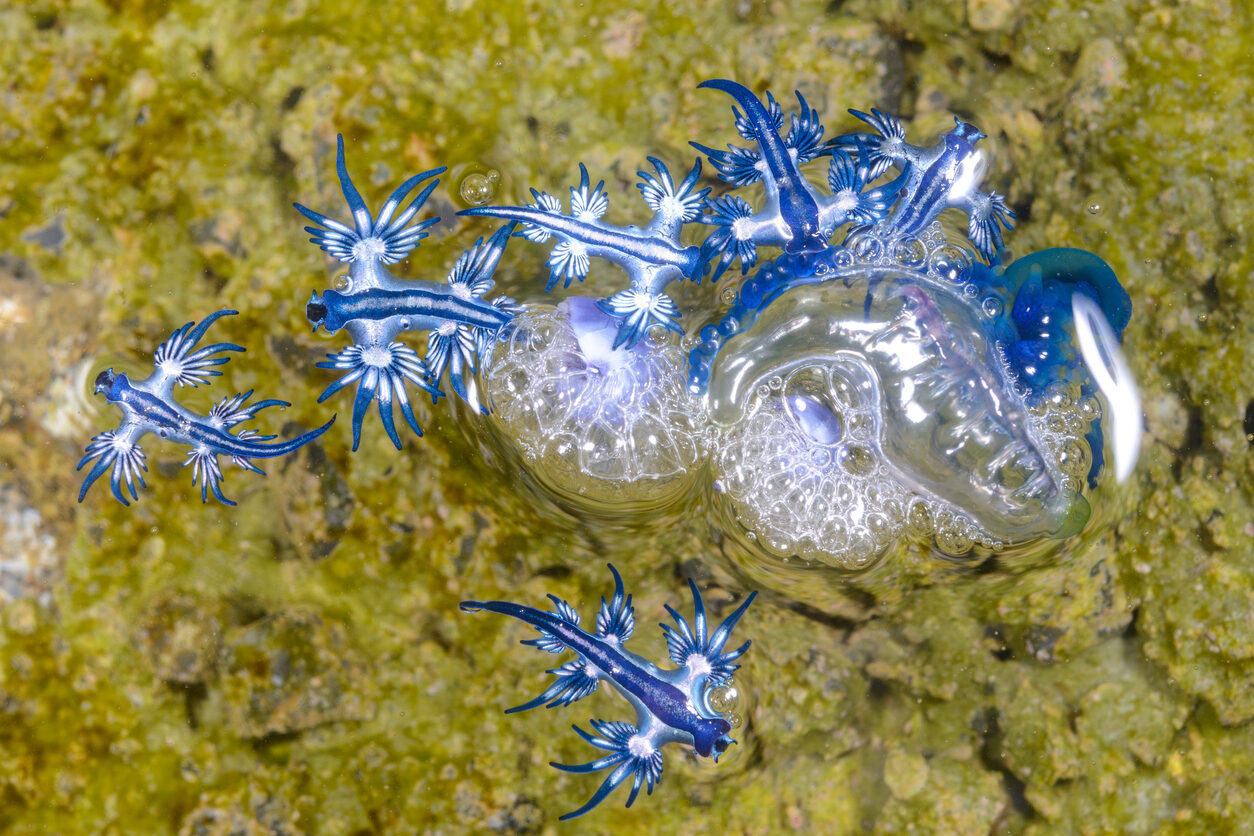
Unlike fish or other sea creatures that swim with purpose, the blue dragon is a passenger of the sea. It has no control over where it goes, simply drifting wherever the ocean takes it. This makes it an accidental world traveler, floating across tropical and temperate waters—from the coasts of Australia to South Africa, Europe, and even parts of the Americas. One day it’s in the Pacific, the next it’s washing up on a beach where unsuspecting tourists might mistake it for a pretty seashell. Its nomadic lifestyle means it can be found in various oceans, though it’s rarely seen due to its open-water existence.
Because it lacks the ability to swim against currents, strong storms and changing tides dictate its journey. Some blue dragons get caught in powerful ocean gyres, spinning them in giant loops for years before they eventually wash ashore. Others drift into clusters of jellyfish, feasting until they grow strong enough to store venom for defense. While its life may seem directionless, this free-floating existence has allowed it to thrive across the world. Despite being at the mercy of the ocean, the blue dragon proves that sometimes, adaptability is the best survival skill of all.
6. It’s Both a He and a She—At the Same Time
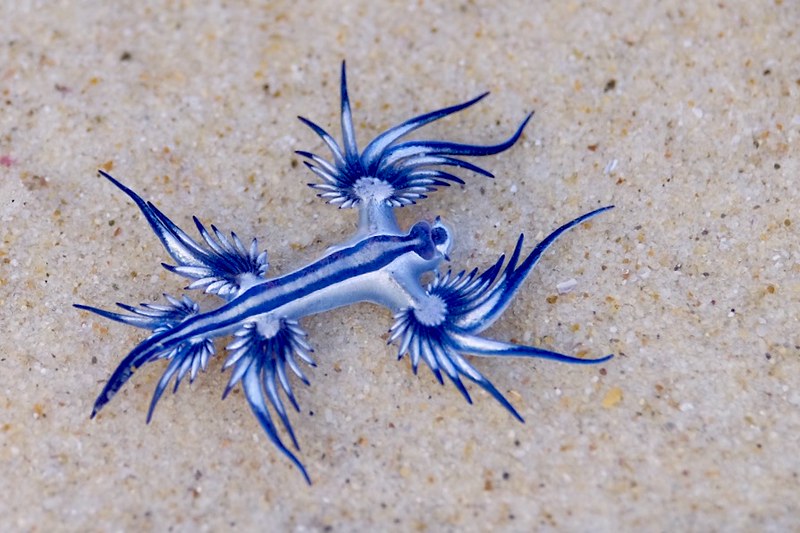
Why choose between being male or female when you can be both? Blue dragons are hermaphrodites, meaning each one has both male and female reproductive organs. But even with this double advantage, they still need a mate to reproduce. When two blue dragons meet, they engage in a delicate “sword fight” with their reproductive organs, each trying to be the one to pass on sperm without receiving any. In the ocean dating scene, it’s truly survival of the slickest. This bizarre mating dance ensures that no matter the circumstances, a blue dragon always has a way to continue its lineage.
After one of them “wins” the reproductive duel, the fertilized dragon goes on to lay hundreds of eggs. These eggs are carefully placed on floating debris or even the remains of their prey, giving them a safe space to hatch. Once the baby dragons emerge, they are miniature versions of their parents, already equipped for a life of drifting and stealing venom. It’s a rough start, but in the vast and unpredictable ocean, only the toughest survive. The cycle of beauty and danger continues, ensuring that these mesmerizing little creatures remain part of the ocean’s mysterious wonders.
7. It Lays Strings of Hundreds of Eggs—Ensuring Its Legacy Lives On
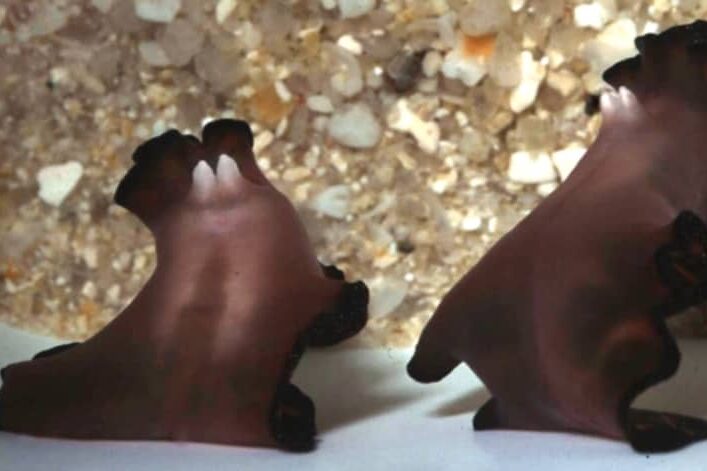
After a successful battle of the sexes, a blue dragon will lay long chains of tiny eggs on floating debris or even the carcasses of its prey. The eggs hatch into miniature versions of their parents, already prepped with their deadly inheritance. The ocean isn’t a gentle place, so laying hundreds of eggs at once increases the odds that at least a few will make it to adulthood—and continue the cycle of beauty and destruction. While other marine creatures rely on parental care, blue dragons take the approach of quantity over quality, leaving their offspring to fend for themselves.
Once hatched, these tiny sea slugs begin their dangerous journey as venom thieves, searching for their first Portuguese man o’ war to consume. From the moment they’re born, survival is a race against predators, ocean currents, and even their own kind. Those that make it grow into some of the most fascinating creatures in the sea, proving that even the smallest beings can have the deadliest defenses. Each one carries the potential to float across the world, bringing both beauty and danger wherever it drifts.
8. It’s One of the Ocean’s Best-Kept Secrets—Until It Washes Ashore

Most people have never seen a blue dragon in the wild because they spend most of their lives drifting in the open ocean, far from human eyes. But every now and then, strong tides push them toward shore, where they end up on beaches, surprising (and sometimes stinging) beachgoers. They may look like harmless, otherworldly jewels, but anyone who picks one up quickly learns the painful truth. Their bright blue color might be mesmerizing, but it’s also nature’s way of saying, “Stay back, I’m dangerous.” The ocean is full of hidden wonders, but some are best admired from a safe distance.
When they do wash up, their presence often sparks curiosity—and sometimes fear—among locals and tourists. Social media is filled with photos of unsuspecting beachgoers marveling at the tiny blue creatures, unaware of their venomous nature. Some even mistake them for beautiful pieces of sea glass or shells. But touching one could lead to an unpleasant surprise, proving that nature’s most stunning creatures are often its most deceptive. Next time you spot a shimmering blue form on the sand, remember: beauty in the wild often comes with a hidden sting.
9. It’s Proof That Nature Loves a Dramatic Flair

Let’s be honest—if the blue dragon didn’t exist, we’d assume it was a mythical creature from a fantasy novel. Its brilliant colors, deadly abilities, and mysterious lifestyle make it feel like something out of a legend. Yet, it’s very real, reminding us that the ocean is still full of bizarre, magical wonders waiting to be discovered. Every inch of this tiny creature is designed for both survival and spectacle, proving that nature isn’t just practical—it has an artistic side too. It’s a living contradiction: delicate yet dangerous, small yet formidable, beautiful yet fearsome.
Despite its tiny size, the blue dragon has captivated marine biologists and ocean lovers alike. Its ability to harness the venom of larger creatures makes it one of the most unique predators in the sea. Scientists are still uncovering the secrets behind how it processes venom and why it evolved such dazzling colors. While much of the deep sea remains unexplored, creatures like the blue dragon remind us that some of nature’s most astonishing marvels are hiding in plain sight. In a world full of extraordinary life, this tiny, floating dragon might just be one of the most enchanting and terrifying creatures of them all.


